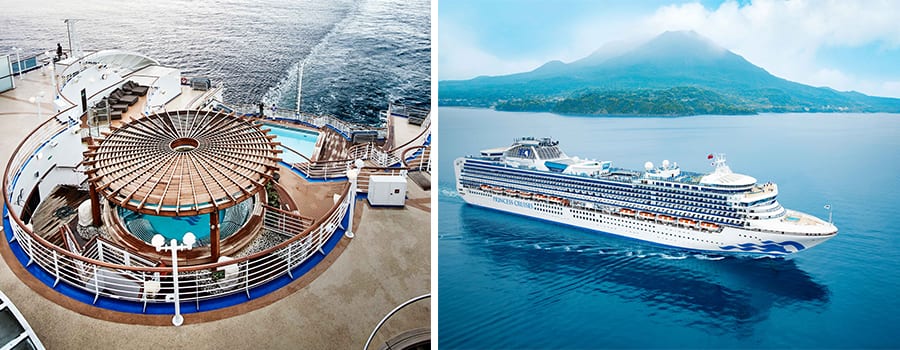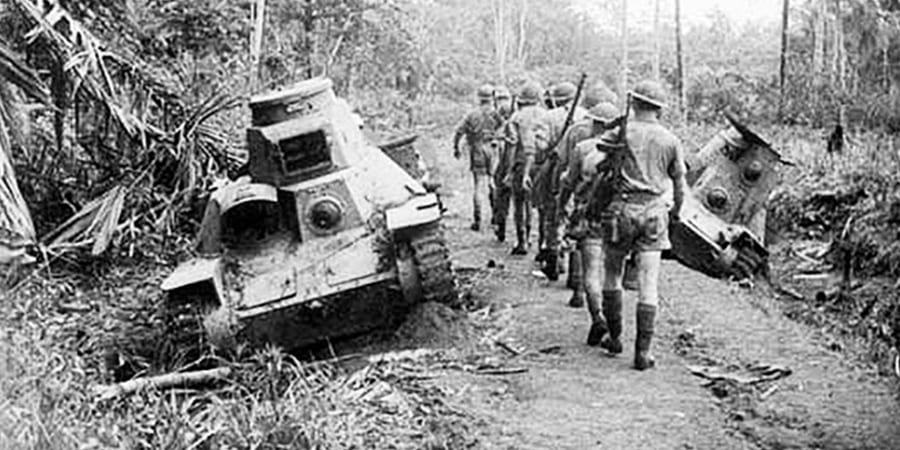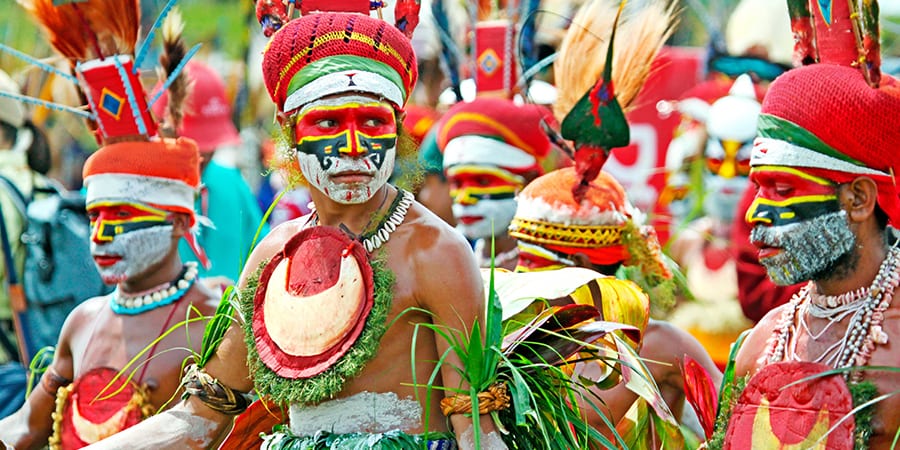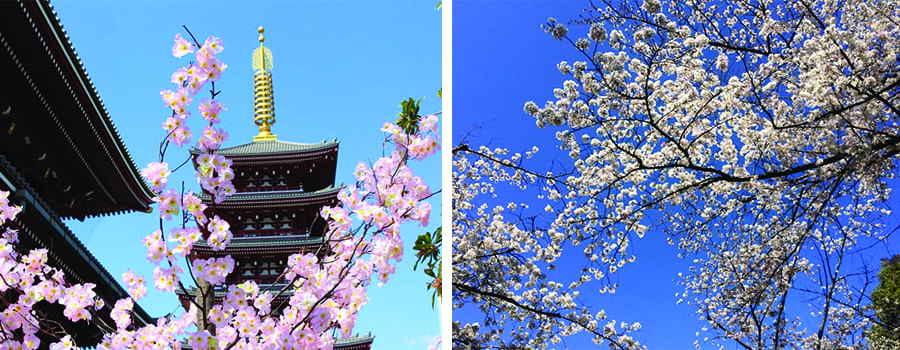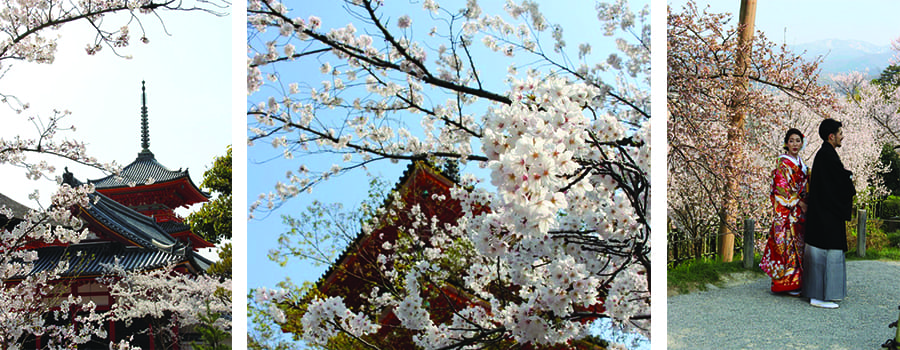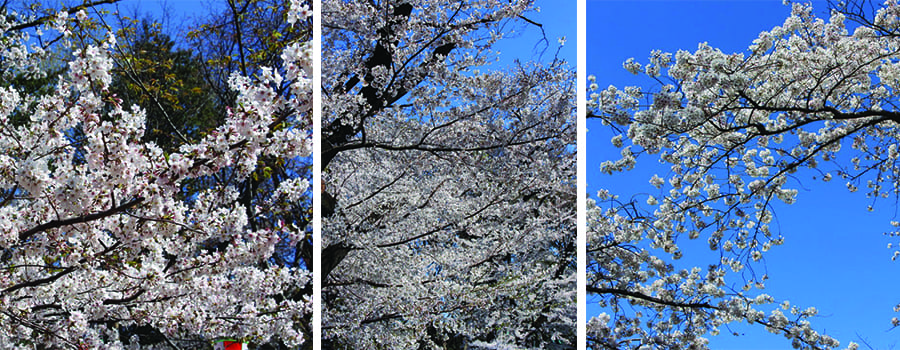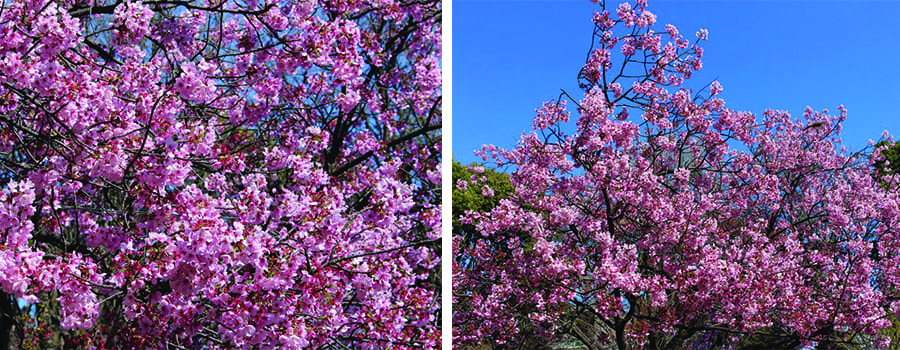For several years now Cruise Express has been traveling throughout Japan, escorting hundreds of clients who have returned with cameras full of stunning imagery and minds full of unforgettable memories.
While Japan has increasingly become a bucket-list travel destination, our travel specialists are asked what the key attractions are for this somewhat mystical island nation. In no particular order, outlined below are a few of the sights and sounds our clients time and time again treasure:
Shrines & Temples
Two of the most common historical buildings you will find in Japan are temples and shrines, with over 2,000 in Kyoto alone, there are literally millions of different sizes and significance scattered throughout. They are not the same but what is the difference between the two?
Basically, temples are Buddhist, while shrines are Shinto. Temples have monks and often many Buddhist statues and sometimes have a graveyard attached on the site. Buddhism was originally brought from India to China during the Heian era, then spread throughout Japan.

Shrines are easy to identify as they generally have a large, often vermilion red sacred gate, standing in front of them. Unlike Buddhism, Shintoism is indigenous to Japan, and is as old as Japan itself. It is believed that everything has a spirit, even stones, trees and mountains. It is believed there are millions of gods throughout Japan. Spirits of nature and ancestors are highly revered above all else.
A large number of wedding ceremonies are held in Shinto style. Death, however, is considered a source of impurity and is left to Buddhism to deal with. Consequently, there are virtually no Shinto cemeteries, and most funerals are held in Buddhist style.
Mount Fuji
No trip to Japan is complete without a visit to the country’s most symbolic geographical landmark, revered since ancient times, culturally, spiritually and physically. At 3,776 metres high, Mt Fuji is the highest mountain in Japan and a UNESCO World Cultural Heritage site since 2013.
It’s not always easy to see this dormant volcano (no eruptions since 1707) though, as the weather and seasons can sometimes keep the mountain shrouded in clouds for days or weeks. While it seems that on average, early morning is the best visibility from Tokyo on a clear day (approximately 100km away) typically from autumn to winter – in particular, December and January are usually the best months for visibility.

Undoubtedly, Mt Fuji is the most popular tourist site in Japan, for both foreigners and Japanese, particularly in springtime when cherry blossoms frame the snowy mountain in full bloom shades of pinks and whites.
Upwards of 300,000 people every year embark on what many call a gruelling eight-hour climb to the summit, but the achievement and stunning sunrises are well worth it. It is often regarded as a sacred pilgrimage to summit the mountain with thousands of Shinto shrines and Buddhist temples along the way. Naturally, these climbs are usually done in the warmer months particularly between July and August, with lots of ‘huts’ to rest and refresh, so if a good hike is on your agenda then this may be the perfect destination for you!
Sumo Wrestling
Sumo is Japan’s national sport and the only country in the world where it is practiced professionally. Although many consider it a modern form of martial art, this unique style of wrestling (men only in competition and ceremonies) actually originated as a Shinto religious ritual over 1,500 years ago to ensure a bountiful harvest and to honour the spirits – known as kami.
It is considered a trial of strength in combat and the rules, although having changed throughout history, are relatively simple. The first wrestler who has any part of his body touching the ground (soles of feet excluded), thrown to the ground or who steps out of the ring, is defeated – game over – many matches only last for a handful of seconds!
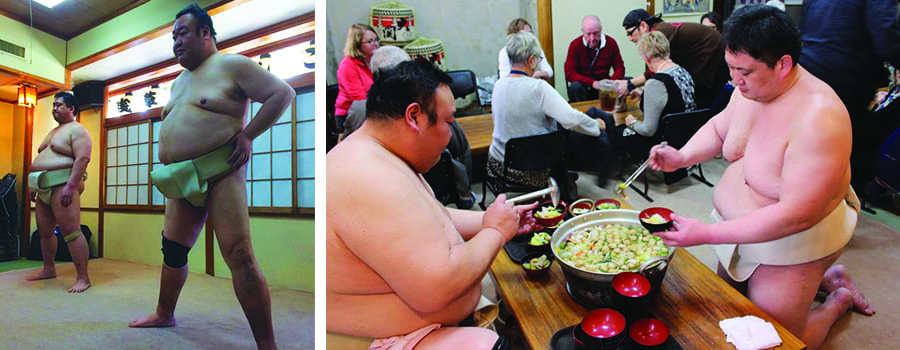
Most of us are curious as to why Sumo wrestlers are so ‘fat’ – can’t be healthy surely? In fact, the early wrestlers were more wiry and muscular than today. This has occurred only in the 20th century since there are no weight divisions in professional sumo, every wrestler wants to be as big as they can be to use their weight in the ring.
These tournaments really do sell out quickly so please ensure you buy your tickets before you leave home unless you are on a Cruise Express escorted tour as this will be managed for you.
Cherry Blossom Time
Every spring in Japan the country comes alive in clouds of delicate pink and white as cherry trees blossom with new life – The Sakura Season – a truly symbolic image of this island nation.
The cherry blossom season is undoubtedly the highlight of the Japanese calendar and has been celebrated for hundreds of years. In addition to innovation, neon lights and sushi, the Japanese have long been known as leaders of cherry blossom appreciation.

It is really hard to predict when they will open and be at full bloom as it really is weather dependent – that week fluctuation of earlier or later is impossible to guess. Fortunately, geographical location is a reliable factor in determining blossom-time. The south always begins a lot earlier, often in January, while in the very north, it can be as late as May!
At the end of the day, picking the exact time to see cherry blossoms is not easy or guaranteed, particularly on a short trip. To avoid disappointment, we recommend you plan your holiday around so many other fabulous things Japan has to offer, and if you happen to time the blossoms right then consider it a wonderful bonus!
Shinkansen Bullet Trains
Shinkansen, translated to “New Trunkline” and quickly dubbed globally as the “Bullet Train” for obvious reasons, was originally built and operated by government-owned Japanese National Railways in 1964 and has been part of the Japan Railways Group since 1987.
The first 515km section of the original line between Tokyo and Osaka was opened in 1964, just before the start of the Tokyo 1964 Olympic Games. The many innovations including kilometre long welded sections of track and prestressed concrete ties were internationally acclaimed.
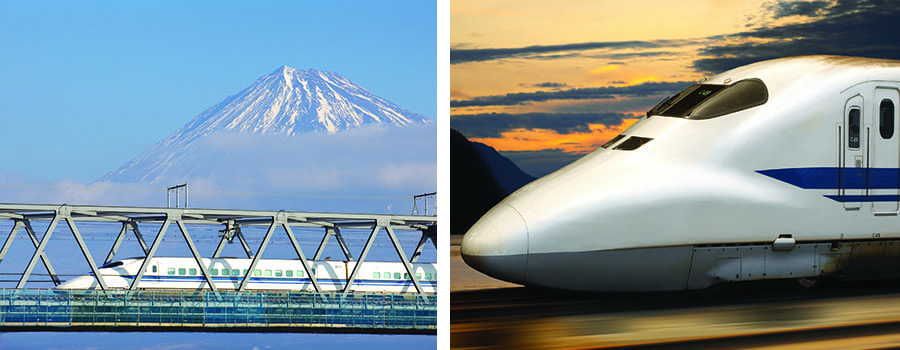
Although very expensive, one incredible invention has been ‘Maglev’, a railway based on magnetic levitation. Electromagnets levitate the train slightly above the tracks and without the friction of typical rail, it’s these magnets that create the thrust that moves the train.
Interestingly, the initial concept pre-WWII was to run lines to Beijing, a tunnel to Korea and Singapore, and build connections to the Trans-Siberian Railway and other lines throughout Asia. Due to the worsening of Japan’s position in 1943, these plans were abandoned.
What did continue to develop was 2,765km of railway throughout Japan connecting distant towns, islands and cities to the capital to promote growth and development. Since inception, and now with speeds up to 320km per hour, the Shinkansen has carried over 10 billion passengers and there has never been a fatality due to a train accident such as a collision or derailment, despite all the typhoons and earthquakes Japan endures.
Sushi Making
Last but not least, what’s a visit to Japan without a class in how to make sushi. This is always a hit with Cruise Express clients, even those that don’t eat sushi have a great time, learn new skills to take home to impress family and friends, but most importantly have a lot of laughs. Ask about gold leaf painting classes too!
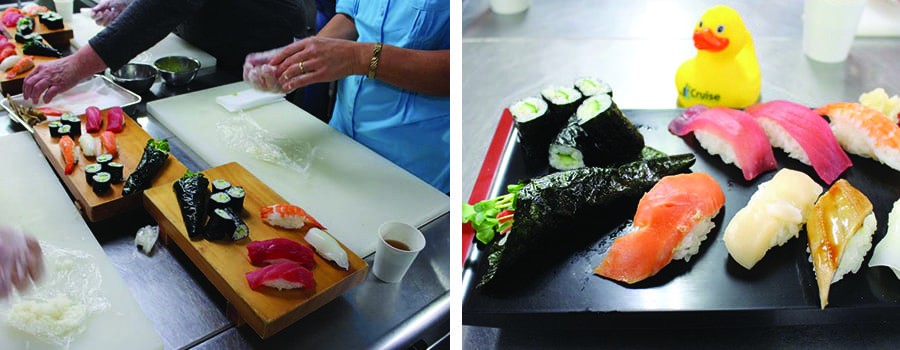
Click here to find out more about our 2020 escorted holiday to Japan that is selling fast!

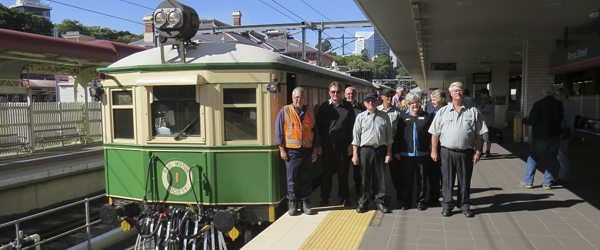





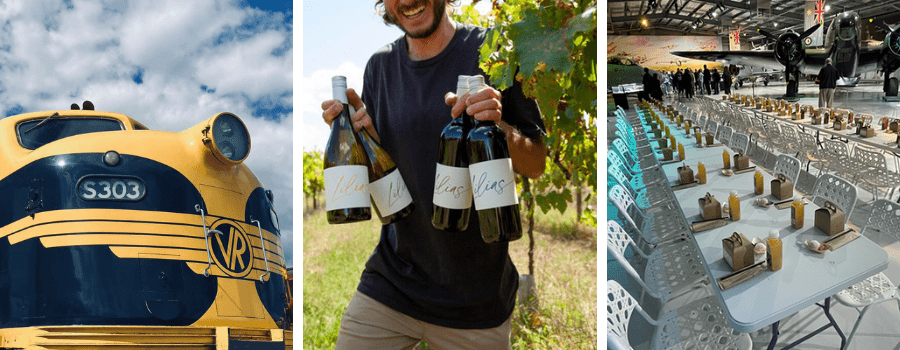

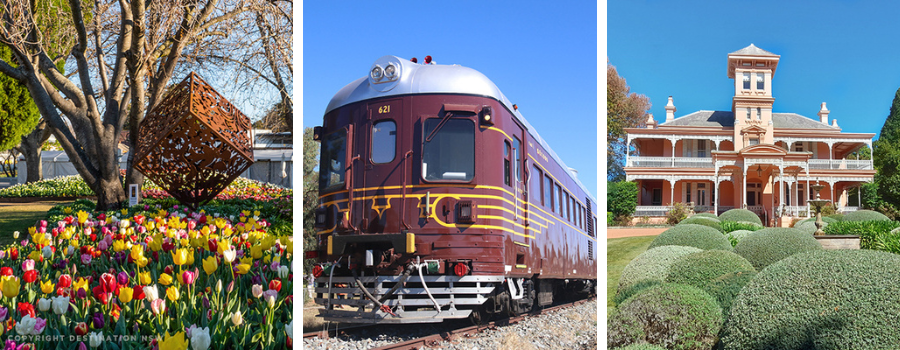

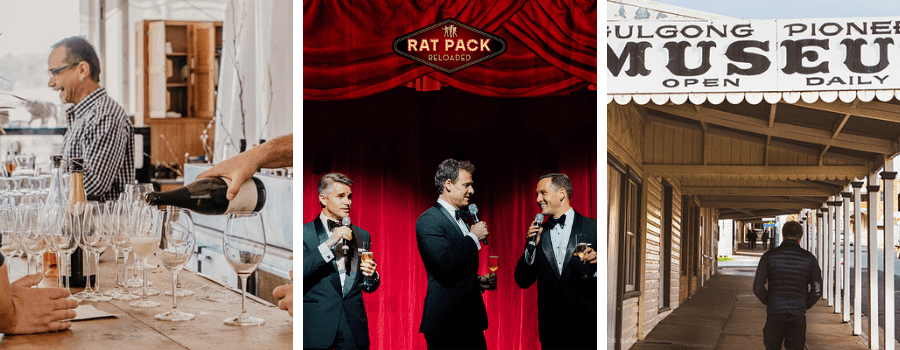

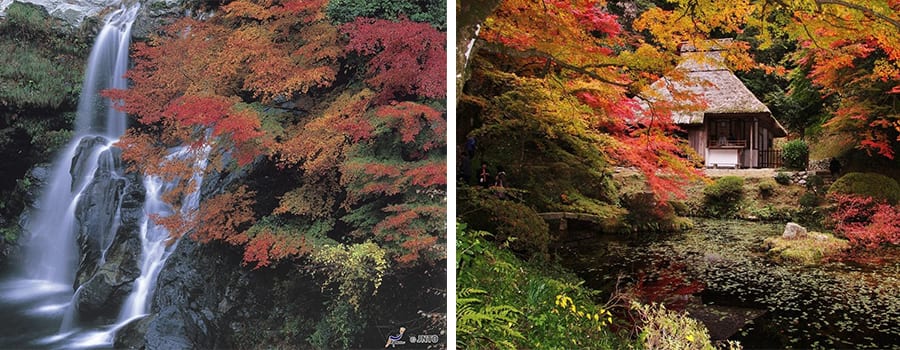
 Miyazaki
Miyazaki  Toba
Toba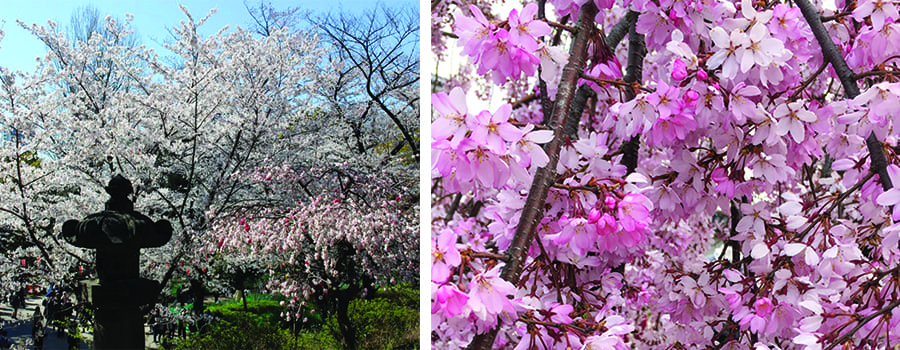 Tokushima
Tokushima